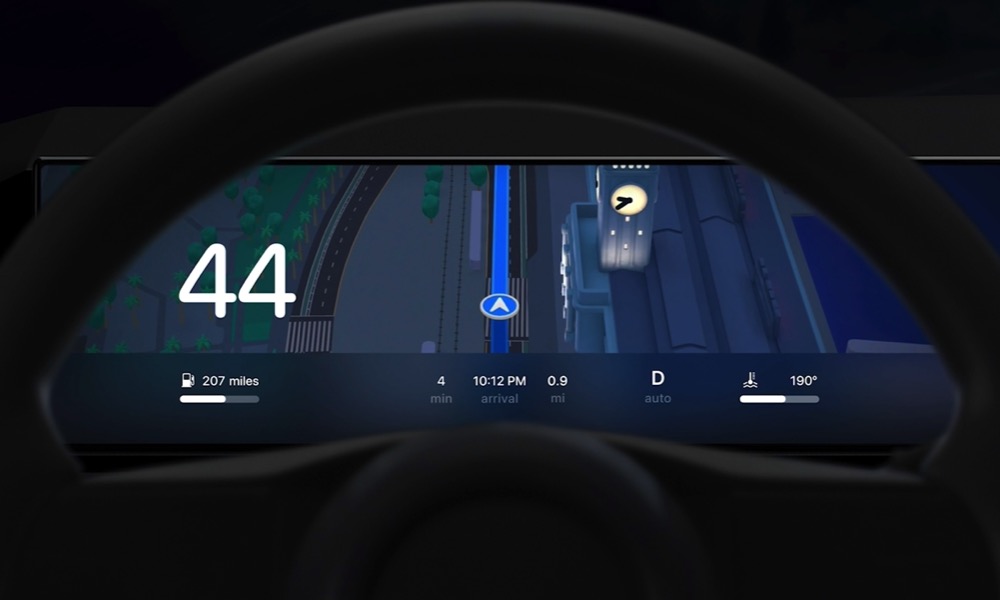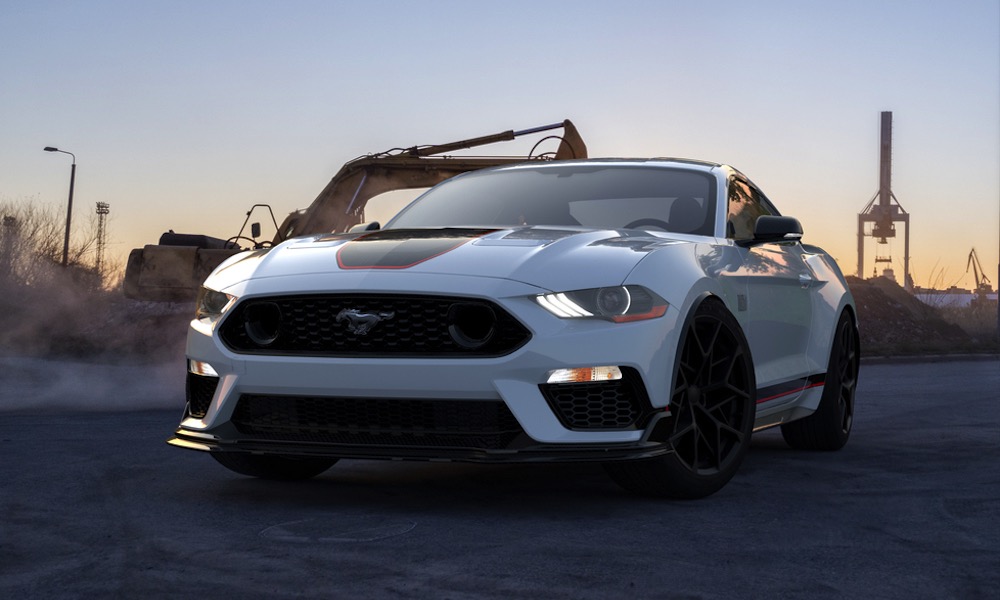The Battle for the Dashboard | Apple’s ‘CarPlay 2.0’ Is Expected to Arrive This Year, But Where?
 Credit: Apple
Credit: Apple
Toggle Dark Mode
It’s been nearly a year since Apple unveiled its iOS 16 roadmap at its June 2022 Worldwide Developers Conference. While most of the promised features have now arrived in the series of point releases that have followed, there’s one big one we’re still waiting on: Apple’s new “CarPlay 2.0” platform.
Of course, this one isn’t solely up to Apple; the ambitious and futuristic new CarPlay design requires that automakers get on board to allow even deeper integration into their in-car infotainment and electronics systems, and that’s a much taller order than simply presenting a custom iPhone UI on your dashboard.
With CarPlay 2.0, Apple is giving us a glimpse of what the dashboard of a future Apple Car may look like, with the ability to take over the entire dashboard across multiple displays, rendering even gauges from a standard instrument cluster through the CarPlay interface. It also promises to let your iPhone monitor and control many of your in-car systems, from the vehicle’s performance stats to the climate control system.

This requires automakers to work with Apple to design “glass cockpits” for their vehicles suitable for the new CarPlay design and provide all the necessary hooks to access in-car systems.
To be fair, there’s no reason to believe that CarPlay 2.0 is behind schedule — Apple said from the beginning that we shouldn’t expect the first supported cars to be announced until late 2023 — but both the industry and the rumor mill have been quiet enough about it to raise at least a few questions.
When and Where Is CarPlay 2.0 Coming?
For one thing, Apple claimed to be working with an impressive list of carmakers to bring this to fruition, including Ford, Lincoln, Mercedes-Benz, Infiniti, Honda, Acura, Jaguar, Land Rover, Audi, Nissan, Volvo, Porsche, and more. While a few, like GM, were conspicuous by their absence, that’s less of a surprise in hindsight.
Despite Apple’s announcement, many of these companies have been noncommittal at best when asked about their plans. Only four even tacitly committed to embracing the new CarPlay. BMW was most specific, saying it would “continue the seamless integration of Apple’s ecosystem” and evaluate “how the latest innovations announced at WWDC can be integrated into our solutions.” Volvo and Polestar said they plan to support the new CarPlay but offered no specifics about when it would be coming to their vehicles. Mercedes-Benz confirmed it was having discussions with Apple as a routine part of its policy to evaluate “all potentially relevant new technologies.”
As with most new vehicle technologies, it seems unlikely CarPlay 2.0 will be a widespread rollout from even Apple’s most dedicated partners. For instance, while BMW has always led the way in Apple integration, from wireless CarPlay to Car Key, the more advanced Ultra Wideband version remains limited to the BMW X1 and new BMW iX1. That duo seems likely candidates for CarPlay 2.0, but the rest of the BMW family is a question mark, at least in the short term.
In an interesting twist, Ford could end up being a dark horse in this race. The automaker had no comment last year about plans for CarPlay 2.0, and many haven’t been holding out much hope for an Apple partnership after it announced two years ago that it was cozying up with Google to have its car systems running entirely on Android.
Although CarPlay 2.0 could likely still run on an Android foundation, Ford also intended to offer “Google apps and services built-in to our vehicles, including world-class map and voice technology.” It seems unlikely the two companies would go to the effort of building in Google Maps and Google Assistant just to let them be pushed aside by the new CarPlay system. It also sounds exactly like what GM is doing in pushing out CarPlay entirely.
However, despite Ford’s promises to bring Android Automotive to at least some of its 2023 models, Google’s Cars page still lists the manufacturer as “Coming Soon.” It may be telling that Ford’s announcement of its partnership with Google also came six months before former Apple executive Doug Field took the helm.
Field spent several years heading up “Project Titan” — Apple’s ambitious project to create its own self-driving car. He joined Apple in 2018 from Tesla, where he was a Senior VP of Engineering, but he had also served as a VP of product design and engineering with Apple from 2008 to 2013 prior to his time with Tesla.
In 2021, Field shocked the industry when he left Apple to serve as “chief advanced technology and embedded systems officer” for Ford — a position that has him reporting directly to the President and CEO.
In that position, Field is responsible for overseeing “the next generation of Ford’s connected products and experiences,” which would surely include integration and partnerships with Apple and Google. With nearly a decade under his belt as a senior executive at Apple, he undoubtedly has some ideas about what direction Ford should go in.
While it’s likely driven chiefly by marketing spin in the aftermath of GM’s announcement that it would be abandoning CarPlay, Ford recently issued a statement to 9to5Mac recommitting to the technology, especially within its EVs.
Of course, it’s still a stretch from “We continue to offer Apple CarPlay and Android Auto because customers love the capability” to going all-in on CarPlay 2.0. However, Ford is one of the companies on Apple’s list of partners. If nothing else, the presence of Doug Field as the key decision-maker gives Apple an established relationship within Ford’s walls.







